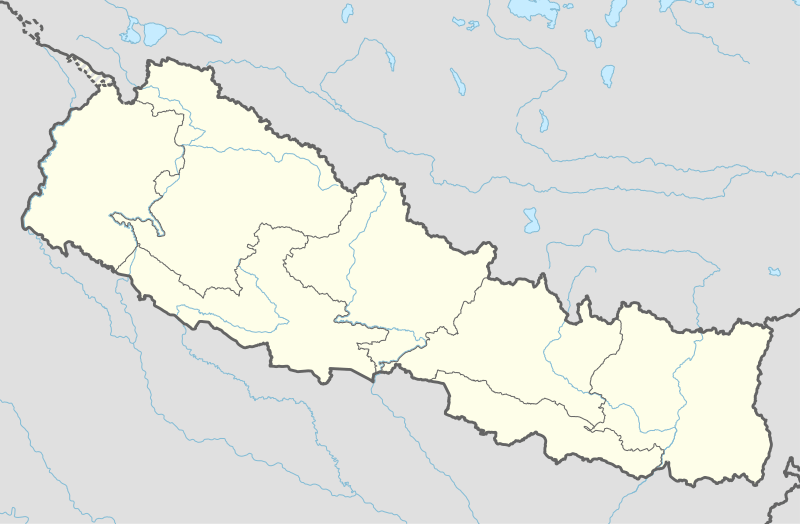Gadhimai Temple
Gadhimai Temple (Nepali: गढीमाई मन्दिर) is a temple of Gadhimai Devi, an aspect of Kali, the Hindu goddess of power. The temple is situated in Mahagadhimai Municipality in Bara District of south central Nepal,[1] though the term usually refers to Gadhimai festival, the world's biggest animal sacrifice conducted at the Gadhimai temple area in central Terai of Nepal.
| Gadhimai Temple | |
|---|---|
Gadhimai Temple | |
| Religion | |
| Affiliation | Hinduism |
| District | Bara |
| Deity | Gadhimai (Goddesses of power) |
| Festivals | Gadhimai festival |
| Location | |
| Location | Bariyarpur Bara |
| Country | Nepal |
 Location in Nepal | |
| Geographic coordinates | 26°59′35.7″N 85°02′47.8″E |
Gadhimai festival
Animals are sacrificed as part of the Hindu festival, with the hope that the sacrifice will lead to the fulfillment of wishes by the goddess.[2] The ritual began at dawn with a ceremonial "pancha bali" or the sacrifice of five animals, comprising a rat, a goat, a rooster, a pig and a pigeon.[3] It is estimated that 300,000 - 500,000 animals were killed during the period of sacrifice in 2009[4] while 5 million people visited Gadhimai during the festival.[5]
This centuries-old tradition is observed every five years in Gadhimai premises located in the village of Bariyarpur of Bara District of Nepal near the border with India. As per 2015 the Nepalese government placed a ban on the further slaughter of animals during this festival. The Gauri Maulekhi, HSI/India consultant & Trustee, People for Animals, petitioned India’s Supreme Court against the movement of animals announced on August 3, 2015. They plead for an abolishing of sacrificing of animals during Gadhimai-festivals in the Indian states of Bihar, Jharkhand, Uttar Pradesh and West Bengal.
Male domestic Asian water buffaloes (Bubalus bubalis) (locally called "PaaDa") are the preferred species to offer to the goddess. Several other species including male goats (Khassi/Boka), chickens (Murga/Kukhura), Pigeons (Parewa), Ducks (Haans) and some rats (Moos), are also killed.[1]
Several animal rights activists protest against this event before and during every Gadhimai festival. The 2009 event drew the attention of celebrities like Maneka Gandhi and Brigitte Bardot, who raised their voices against the killings.[2] Nepal government officials said that they cannot stop the centuries-old tradition, despite opposition from animal-rights activists from Nepal and India. Animal rights activists say they are not looking for the practice to end overnight.[5][6]
The Ghadimai Temple Trust declared a formal decision to end animal sacrifice in July 2015.
See also
References
- Jolly, Joanna (24 November 2009). "Devotees flock to Nepal animal sacrifice festival". BBC News.
- Sarkar, Sudeshna (24 November 2009). "Indians throng Nepal's Gadhimai fair for animal sacrifice". The Times of India.
- "Nepal's Gadhimai festival: Hindu devotees sacrifice thousands of animals in ritual". Daily News and Analysis. Reuters. 28 November 2014.
- Lang, Olivia (24 November 2009). "Hindu sacrifice of 250,000 animals begins". The Guardian.
- "Ritual animal slaughter begins in Nepal". CNN. November 24, 2009.
- "In pictures: Hindu animal sacrifice festival in Nepal". BBC News. 28 November 2014.
External links
| Wikimedia Commons has media related to Gadhimai Temple. |